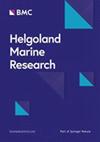海洋岛屿底栖生物群落中非本地物种定居的变异性
4区 地球科学
Q2 Agricultural and Biological Sciences
引用次数: 9
摘要
在新环境中引入非本地物种(NIS)是对沿海生态系统的主要威胁。对NIS定殖对当地生态系统影响的机制和程度的充分了解,对于制定缓解措施和防止新的入侵变得越来越重要。在本研究中,我们询问来自海洋岛屿的不同沿海底栖生物群落是否对NIS定殖过程具有不同的脆弱性。首先,聚氯乙烯沉降板在马德拉岛两个不同地点的岩石海岸(北海岸和南海岸)部署了1年。然后,我们实施了一个中观实验,在不同水平的NIS传播压力下维持招募的盘子群落,以评估它们对NIS定殖过程的脆弱性。结果表明,NIS的定殖成功不受繁殖体压力水平的影响,但最终的定殖模式因群落起源而异。这种变异可归因于每个群落优势物种之间的主要结构差异,因此也归因于它们为殖民者提供的生物基质。该研究强调了生物特征如何改变NIS的定植过程,重要的是,表明在城市化背景下,需要密切评估面临入侵风险的居民社区的性质。本文章由计算机程序翻译,如有差异,请以英文原文为准。
Variability in the settlement of non-indigenous species in benthic communities from an oceanic island
The introduction of non-indigenous species (NIS) in new environments represents a major threat for coastal ecosystems. A good understanding of the mechanisms and magnitude of the impact of NIS colonisation on native ecosystems is becoming increasingly crucial to develop mitigation measures and prevent new invasions. In this present study, we asked if distinct coastal benthic communities from an oceanic island can have different vulnerability to NIS colonisation process. First, PVC settlement plates were deployed for 1 year on the rocky shore of two different locations of Madeira Island (North versus South coast). Then, we implemented a mesocosm experiment where recruited plate communities were maintained under different levels of NIS propagule pressure in order to assess their vulnerability to NIS colonisation process. Results showed that NIS colonisation success was not influenced by the level of propagule pressure, but however, final colonisation patterns varied depending on the origin of the communities. This variability can be attributed to major structural differences between the preponderant species of each community and therefore to the biotic substrate they offer to colonisers. This study highlights how biotic features can alter the NIS colonisation process and importantly, shows that in an urbanisation context, the nature of the resident communities facing invasions risks needs to be closely assessed.
求助全文
通过发布文献求助,成功后即可免费获取论文全文。
去求助
来源期刊

Helgoland Marine Research
地学-海洋学
自引率
0.00%
发文量
0
审稿时长
6-12 weeks
期刊介绍:
Helgoland Marine Research is an open access, peer reviewed journal, publishing original research as well as reviews on all aspects of marine and brackish water ecosystems, with a focus on how organisms survive in, and interact with, their environment.
The aim of Helgoland Marine Research is to publish work with a regional focus, but with clear global implications, or vice versa; research with global emphasis and regional ramifications. We are particularly interested in contributions that further our general understanding of how marine ecosystems work, and that concentrate on species’ interactions.
 求助内容:
求助内容: 应助结果提醒方式:
应助结果提醒方式:


